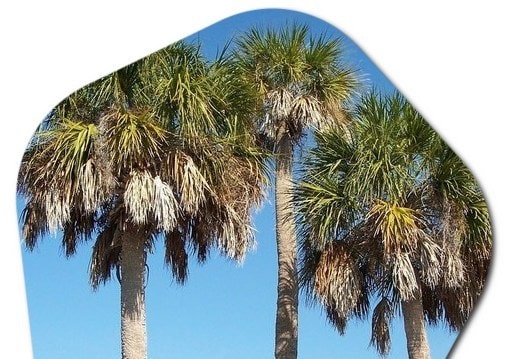What type of trees are most common in Florida?
Although the climate is humid subtropical, tropical climate is also observed in some places. The climate, especially in the south of the state, can get incredibly hot in July. The state rarely receives snow. Is it always hot in Florida? There are long hot and humid summers and short warm winters with little rainfall. The average temperature in winter is 20°C and in summer the average temperature is 28°C.
What is the climate like in Florida; Florida has a varied climate, but it is generally characterized as a humid subtropical climate. Here are some key features of the climate in Florida: Mild Winters: Florida experiences mild winters compared to many other parts of the United States. Temperatures in winter typically range from the 50s to 70s Fahrenheit (10-25 degrees Celsius) in most areas, with the southern regions being even warmer. Frost and freezing temperatures are less common, particularly in the southern parts of the state.
Hot Summers: Summers in Florida are hot and humid. Average temperatures range from the 80s to 90s Fahrenheit (27-35 degrees Celsius) in most areas, with high humidity levels. Heatwaves are not uncommon, especially in the interior regions. The southern parts of Florida, including the Florida Keys, tend to have consistently higher temperatures. Rainfall: Florida receives a significant amount of rainfall throughout the year, with a pronounced wet season during the summer months. Rainfall patterns can vary across the state, with the northern and central regions generally receiving more rainfall than the southern parts. Thunderstorms and heavy downpours are common during the wet season.
Trees suitable for Florida climate
Hurricane Season: Florida is prone to hurricanes and tropical storms due to its location. The Atlantic hurricane season officially runs from June 1 to November 30, with the peak activity occurring between August and October.

Coastal areas are particularly vulnerable to the impacts of these storms, including high winds, heavy rainfall, and storm surge. Coastal Influence: Florida has an extensive coastline along the Atlantic Ocean and the Gulf of Mexico. The proximity to water influences the climate, providing coastal areas with slightly milder temperatures compared to inland regions. The ocean also contributes to the humidity levels in the air. It’s important to note that Florida’s climate can vary regionally. The southern part of the state, including the Florida Keys, tends to be warmer throughout the year compared to the northern and central regions. Additionally, the Florida Peninsula experiences a more pronounced wet season, while the panhandle region in the northwest has a climate more influenced by the Gulf of Mexico. Overall, Florida’s climate is known for its warm and humid conditions, making it a popular destination for those seeking a mild winter and a summer filled with sunshine and tropical vibes.
The most popular trees growing in Florida
Florida is known for its diverse range of tree species, thanks to its unique climate and geography. Some of the most common types of trees found in Florida include:
- Sabal Palm (Cabbage Palm): The Sabal palm, Florida’s state tree, is native to the state and can be found throughout the region. It is a tall, slender palm tree with a distinctive rounded crown and fan-shaped leaves.
- Live Oak: Live oak trees are iconic in Florida, known for their large spreading canopies and massive branches. These long-lived trees are well-suited to Florida’s climate and are often seen in parks, landscapes, and along streets.
- Slash Pine: Slash pine is a native coniferous tree found in Florida’s forests. It has tall trunks, needle-like leaves, and large cones. Slash pines are commercially valuable and are frequently used for timber production.
- Southern Magnolia: The Southern magnolia is a majestic evergreen tree with large, glossy leaves and fragrant white flowers. It is a popular ornamental tree in Florida, adorning landscapes and gardens with its beauty and fragrance.
- Bald Cypress: Bald cypress trees are common in wetland areas of Florida. They have a unique appearance with their distinctive “knees” protruding from the water. Bald cypress trees are deciduous conifers, shedding their needles in the fall.
- Sand Pine: Sand pine is a resilient tree species adapted to Florida’s sandy soils. It is a smaller tree with short, blue-green needles and small cones. Sand pines are often found in coastal areas and sandy pine forests.
- Laurel Oak: Laurel oak is a medium to large-sized tree with broad, shiny leaves and a wide-spreading canopy. It is commonly planted in urban areas and along streets due to its adaptability and attractive appearance.
- Red Maple: Red maple trees are deciduous and display vibrant red foliage in the fall. They are found throughout Florida and thrive in a variety of soil types, making them popular for landscaping and shade.
- Poinciana (Royal Poinciana): The Poinciana tree is known for its stunning display of vibrant orange-red flowers. It is often seen in parks and gardens, adding a burst of color to the landscape during its flowering season.
Which tree species grow well in Florida? These are just a few examples of the many tree species found in Florida. The state’s diverse ecosystems support a wide variety of trees, including both native and introduced species. The specific tree species present may vary depending on the region, from the coastal areas to the interior and wetlands to upland forests. Frorida Tress >>





